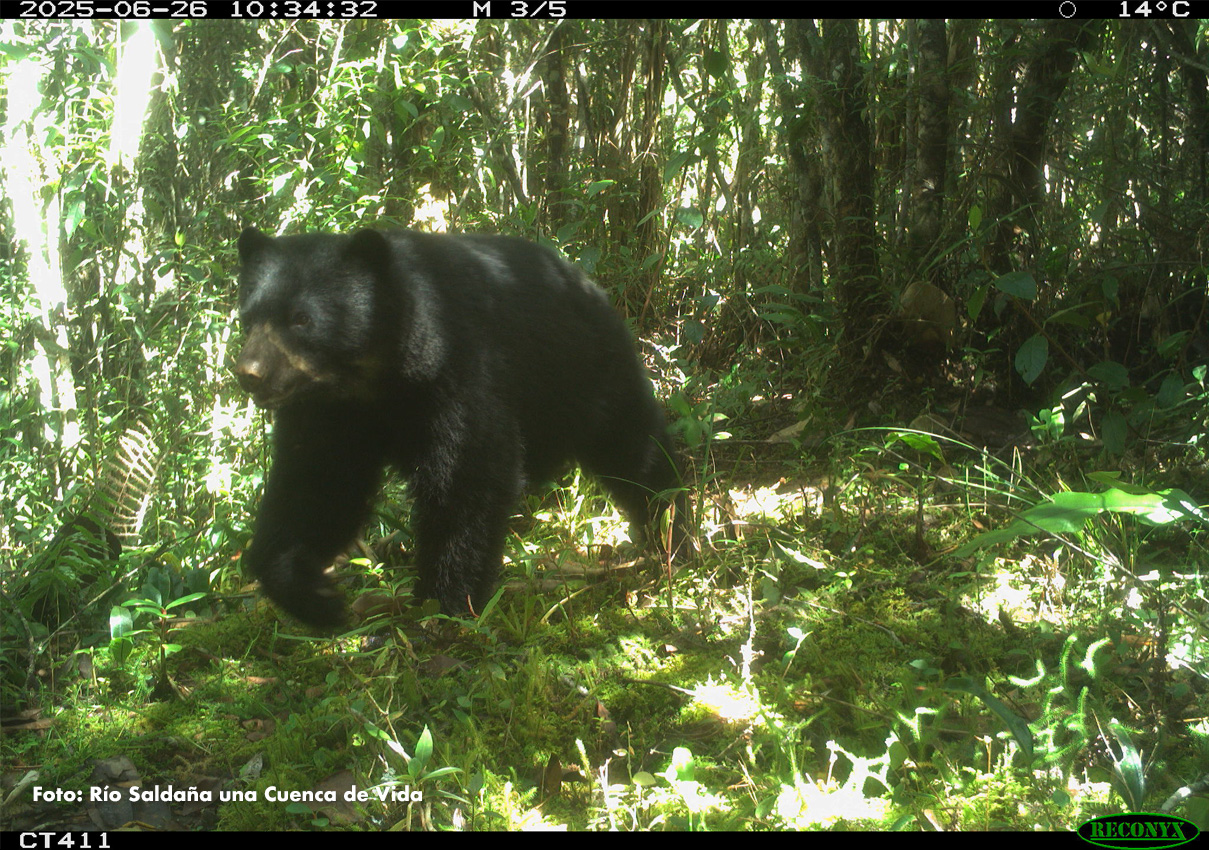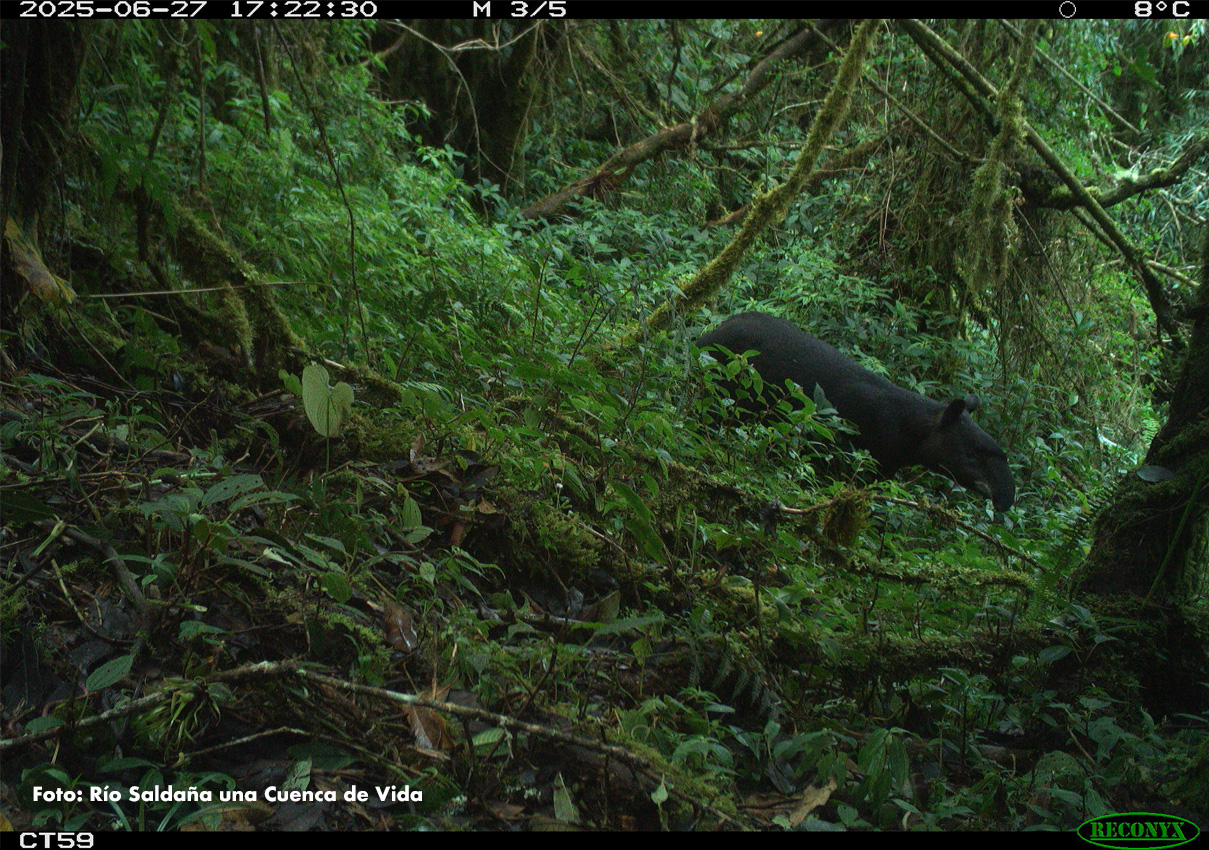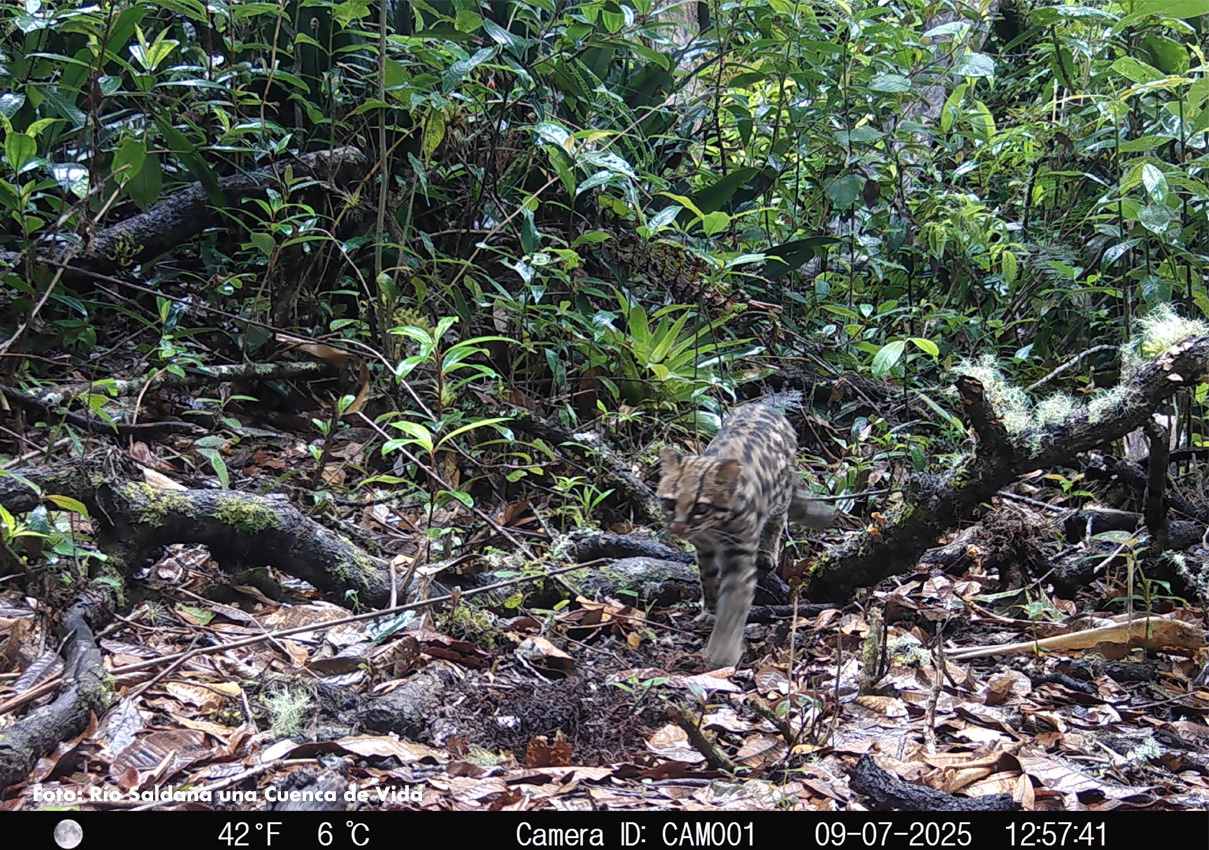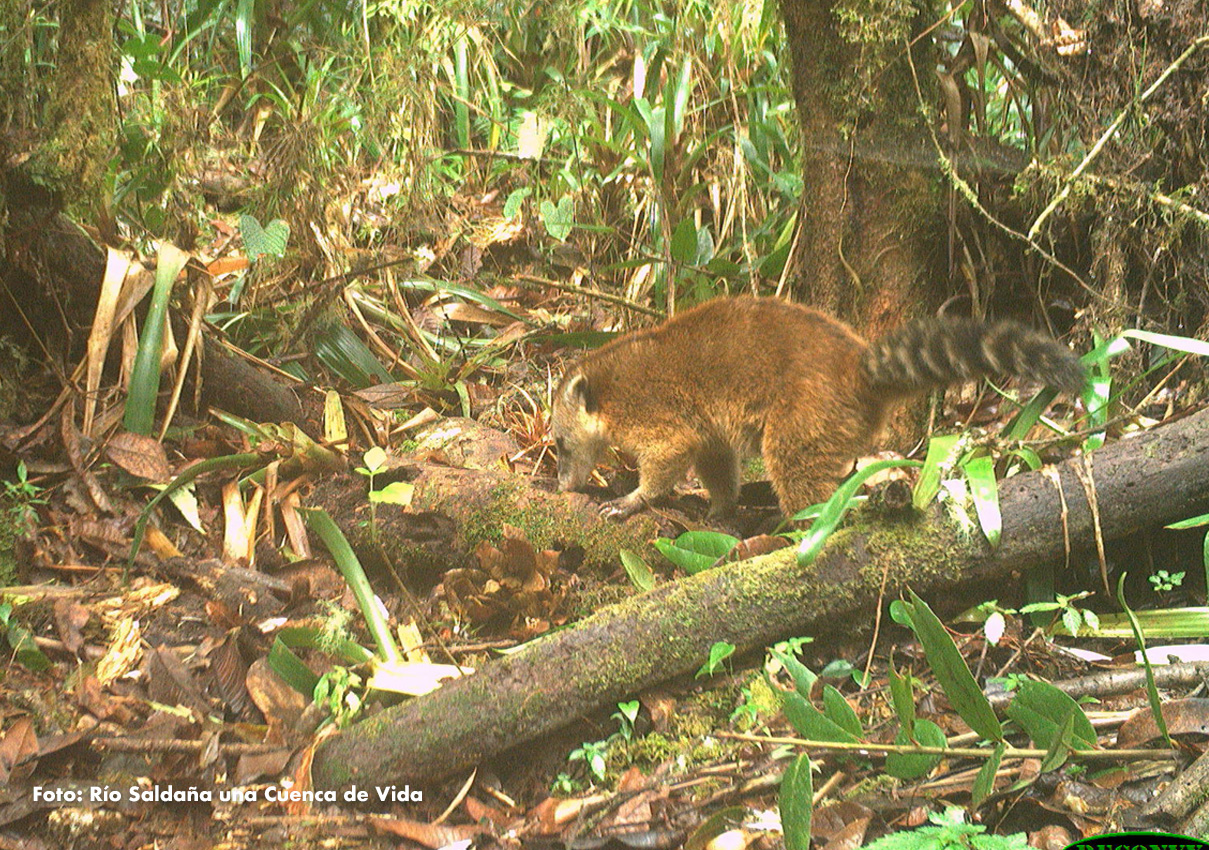By Jacobo Patiño Giraldo
In the darkness of night, a spectacled bear pushes through the vegetation of a high Andean forest in Tolima, Colombia. Suddenly, something catches its attention: a small box painted with a camouflage pattern meant, with little success, to imitate the bark of the tree it is strapped to. Driven by curiosity, it approaches and, after pawing at it, manages to open it.

“In the photos you can see how it approaches; then its claw appears, then a lot of movement, and from that moment on, there are obviously no more images. The camera wasn’t damaged, but once the bear opened it, it stopped working.” This is how Leonor Valenzuela —biologist, ecologist, and WCS Colombia’s Coordinator of Analysis and Synthesis— describes the encounter between an Andean bear and a camera trap: a device that captures photos and videos automatically when it detects movement or an animal’s body heat.
Leonor, together with landowners and residents of rural communities in the upper Saldaña River basin, took part in the wildlife monitoring carried out under the alliance Saldaña River: A Basin of Life. The goal: to identify the species that inhabit the area, assess how conservation initiatives are influencing their populations, and strengthen local knowledge and appreciation of the wildlife that people coexist with every day.
Conservation and Knowledge
Large and medium-sized mammals —bears, deer, tapirs, pumas, among many others— are essential components of Colombian ecosystems. They disperse seeds, regulate populations, and contribute to nutrient cycling. Their presence is also a clear indicator of ecosystem health and proper functioning.
Monitoring them, therefore, helps reveal whether an ecosystem is deteriorating or recovering. “Among the species that respond most sensitively to pressures from habitat loss are large and medium-sized mammals, including a particularly emblematic species for Colombia: the Andean bear. With this in mind, we set out to understand how the forest restoration and protection actions we were implementing might influence their populations,” Valenzuela explains.

Observing mammals in their natural habitat is never easy: many are nocturnal or quickly detect human presence, hiding before our limited senses can notice them. That’s why camera traps have become an especially effective tool. “They’ve proven to be extremely useful because they don’t disturb the animals and also help strengthen people’s connection with biodiversity,” she adds.
The monitoring involved installing camera traps across properties in the upper basin to take stock of the species present and analyze how initiatives such as conservation agreements influence their behavior and relative abundance. “We installed the first cameras in 2022, and this year (2025) we decided to return, because enough time has passed to detect possible effects. It may not necessarily mean an increase in the number of individuals, but rather that they are now reaching places where they were not seen before because they felt threatened,” Valenzuela notes.
Preliminary results are encouraging: all native species show greater abundance in 2025 compared to 2022, and in most cases, the increase was more noticeable on farms with conservation agreements than on those without such commitments. A decrease in cattle, dogs, and cats recorded by the cameras was also observed. “This is extremely gratifying because it means people are responding to requests to keep domestic animals out of conserved or restoring areas,” she affirms.
Wildlife of Tolima
According to the Alexander von Humboldt Institute, Colombia is the sixth richest country on Earth in mammal diversity. Its territory harbors more than 500 species, 58 of them endemic found nowhere else. A privileged setting for both study and protection.

Nubia Castro, owner of the property La Lorena in Chaparral, Tolima, was one of the participants in the monitoring carried out by Saldaña River: A Basin of Life. Although she already knew several of the species that inhabit the area, seeing them through the camera traps sparked a deeper curiosity. “We recorded tapirs, bears, pumas, and even other animals like guans. It’s a privilege for us to know that we live in their habitat, because so little of it remains.”
Wilmer López, a livestock farmer from Roncesvalles and leader of a community wildlife monitoring group, agrees. For him, this project has allowed him to observe animals that neither he nor his neighbors had ever seen in the area. “Both times we’ve installed camera traps, we’ve recorded a large margay —a feline that looks a bit like a jaguar, but smaller. We had no idea that this species lived in these mountains.”
Wilmer adds that the camera trap evidence has helped the community understand that the animals they have long heard about truly coexist with them and are closer than they imagine. “Sometimes you see an Andean bear, tell people, and they don’t believe you. But these images convince them that wildlife really does interact with those of us who live in the countryside. This is very valuable for us.”

Camera traps also reveal behaviors animals would not show if they knew they were being observed. “With felines, it’s always fascinating —they’re just like our house cats. They approach the camera out of curiosity, and in the end, the photos end up showing their face or their eye in close-up. Their reactions when something catches their attention are truly interesting,” Valenzuela says.
How Has Community Perception Changed?
Coexistence between people and wildlife has not always been easy. Habitat loss and the expansion of agriculture have cornered animals, forcing them into inhabited areas and triggering conflicts with farmers and their domestic animals.
Over time, this led to hunting practices fueled by the belief that wildlife and agriculture or livestock production could not coexist. “Two or three decades ago, it was no secret that there were hunters here. There was no awareness about protecting animals. But in the community, we no longer see them as enemies or threats. People even like having wildlife on their farms,” Wilmer says.

For Nubia, the awareness generated through camera trap monitoring has been key to transforming how residents perceive wildlife. “There’s still limited knowledge about fauna, but those of us who love these ecosystems can help raise awareness among other farmers. We can reduce negative interactions with animals without harming them, because we must be aware that there are few of them left,” she notes.
As part of Saldaña River: A Basin of Life, workshops have also been held to showcase the images captured and promote wildlife protection. According to Valenzuela, these have been very effective in strengthening local knowledge. “In the first camera trap workshop we did, we showed images of tapirs, bears, tayras —many people didn’t even know those animals lived there. It was surprising for them. And from 2022 to now, you can see a positive change because people are more aware that their actions have larger impacts.”
The images have also made their way into local schools, sparking curiosity among children who, despite living alongside wildlife, rarely see it so clearly. “At the end of the workshop, the kids asked me to show them more photos. We kept browsing, and they started naming the animals. This is very important to me —not just because of the scientific information, but because it builds a connection between people and the mammals that are so hard to see,” she adds.

Although they often go unnoticed, these animals should not be ignored. In the words of Nubia Castro, “you can’t conserve what you don’t know.” Monitoring —like the work done with camera traps— allows us to understand how wildlife is doing, what they do, and how their populations are being affected by the ways we harm or restore the landscape.
But they are not just data points or ecosystem functions: they are sentient beings that experience pain, fear, and hunger, just like us. Seeing them in their natural habitat —like that curious bear wandering through the high Andean forest— allows us to connect with them and recognize that their future, like that of the entire planet, is in our hands.